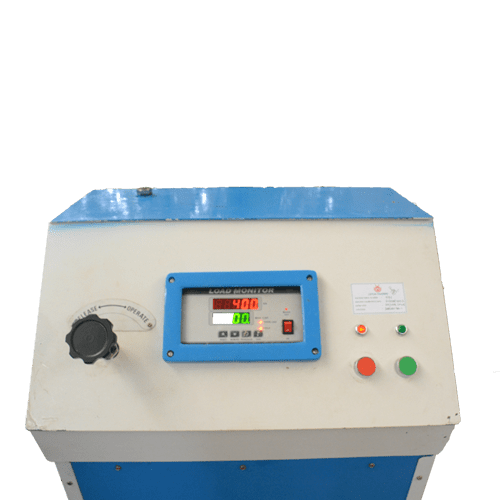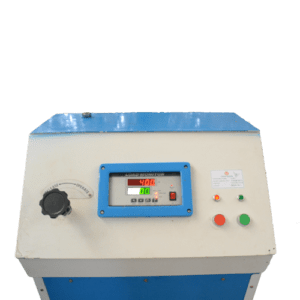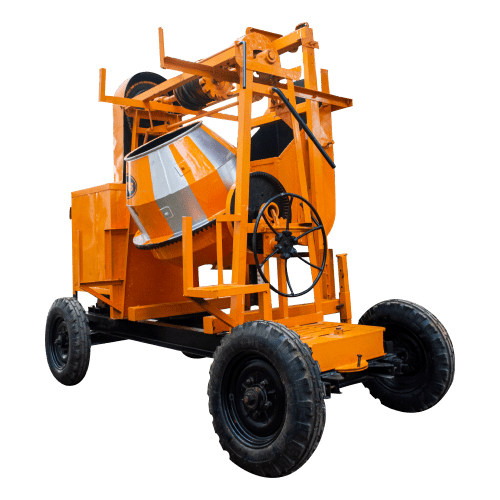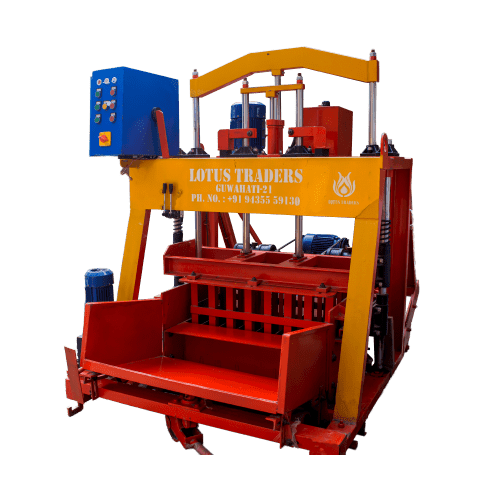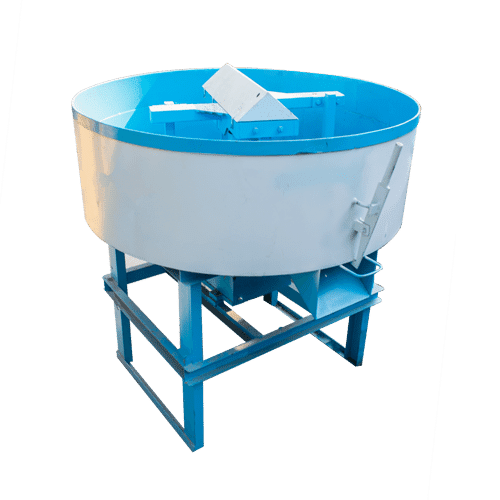Our New Digital Compression Testing Machine in Best Price
The New digital compression testing machine is used to determine the compressive strength of cube and cylinder, it comes with a capacity of 1000, 1500, 2000 kn, with Gems indicator, Godrej motor.
Digital Compression Testing Machine
- High Quality Materials
- Compliance With Standards
- Clear Product Information
- Warranty & Support
- Product Testing & Certification
- Delivery & Policy
- Ask a Question
- Estimated Delivery: 5 Days – 10 Days
FEATURE | SPECIFICATION |
Capacity | 1000, 1500, 2000 kn |
Indicator | Gems Indicator |
Motor | Godrej |
Power Required | 1 HP Single PH |
Pressure Gauge Diameter | 20cm |
Sensor | Wika / Denforce |
What is a Digital Compression Testing Machine ?
- Our Digital Compression testing machine is a testing which develops to meet the need for a simple, economical, and reliable method of testing the compressive strength of the concrete. The design emphasizes both construction and function, making the machines simple and easy to use and maintain. The complete unit includes: LOAD UNIT is a fully welded structure with strong and solid cross members, base, and side rails.
- The hydraulic cylinder is attached to the base. The surfaces of the machine are hardened, ground, and polished. The top step is equipped with a self-adjusting mechanism. To facilitate testing on specimens of different sizes of samples, a heavy-duty screw is provided to lower or raise the plate. The ball seat is attached to the top plate to control the stability of the machine.
- A compression test is a test in which a material experiences the opposing forces that push the specimen inward from opposite sides or are otherwise compressed, "pinched", crushed, or flattened. The sample is generally placed between that distributes the applied load over the entire surface of the two opposite sides of the sample.
- The plates are then pressed together by a universal testing machine, causing the samples to flatten. Typically, the compressed specimen contracts through a direction of the applied forces and expands in a direction perpendicular to the applied force. The compression test is essentially the opposite of the more common pull test.
What is the Purposed of Digital Cube Testing Machine?
- The purpose of a Digital Cube Testing Machine is to determine the compressive strength of concrete cubes or similar specimens. It is commonly used in construction and civil engineering to assess the quality and strength of concrete, which is essential for ensuring the structural integrity and safety of buildings and other concrete structures.
Best Strength Part of Compression Testing Machine Digital
- The ram diameter of the electrically operated compression testing machine digital can be customized according to the specific requirements of the customer. The lower model is positioned at the base of the frame above the ram and takes on a rectangular shape. There is ample space between the plates to accommodate compression testing of cylindrical or cubic specimens. A spacer is provided to facilitate adjustments for cubes and cylinders.
- The top panel of the machine features a pressure gauge with a 20 cm diameter and a maximum load induction pointer. This gauge is connected to the hydraulic pressure pipe. On the right side of the machine, there is a console that houses an electric motor with a clutch. This motor is connected to the pumping unit of the electrically operated compression testing machine.
- To control the loading rate, a slow/fast loading rate regulator is affixed to the top of the console, allowing users to adjust the thread of loading as per their requirements. The digital cube testing machine undergoes full calibration and thorough testing before being certified. The compression level is indicated using a dipstick provided with the machine.
- The Digital Cube Testing Machine adheres to the standards IS-516 and BS 1881. These standards ensure that the machine meets the necessary criteria for accurate and reliable compression testing.
Calibration of Compression Testing Machine Digital
- Calibration of a Compression Testing Machine (CTM) or Cube Testing Machine is a crucial process to ensure its precision and dependability in evaluating the compressive strength of various materials like concrete, rocks, and construction materials. Regular calibration is necessary to maintain the machine's accuracy over time and to ensure consistent and comparable test results.
- 1. The Master Proving Ring is placed at the center of the Cube Testing Machine.
- 2. The test ring is pre-charged three times with the full test load.
- 3. Cub testing is performed by applying ten test loads at nine equal intervals in ascending order. For each test load, the deflection is recorded on the display of the main test ring.
- 4. The sealing device may only be used in one direction of loading, i.e. in compression.
- 5. Procedure/steps 3.1 to 3.4 are repeated for three sets, that is Positions 00120 0 and 270 0 clockwise.
Performance of Digital Compression Testing Machine
- The Compression Testing Machine digital in Guwahati, consists of a high-quality steel frame with a fixed top rail with a ball bearing plate. There are 4 pillars attached to the base and the top plates of the loading frame. The top and bottom plates are adjustable with a cap screw on either side of the pillar.
- To perform the compression test, the sample is loaded into the compression tester with a compression fixture, and a load is applied, compressing it substantially until failure. Watch the video below to learn how to use a compression tester / how a compression tester works and follow the steps.
- The primary objective of a digital cube testing machine is to ascertain the behavior or response of the material. At the same time, it experiences compressive load by measuring fundamental variables such as strain, stress, and deformation strain.
- The pressure test of a material can be used to determine, among other things, the compressive strength, yield point, breaking strength, and the modules of elasticity.
- Understanding the different parameters and values associated with a specific material can determine whether the material is suitable for particular applications or will fail under the specified loads.
Calculation in Calibration of Compression Testing Machine Concrete
- Cube testing machines in concrete play a crucial role in determining the compressive strength of concrete cubes, a vital parameter in assessing the quality and performance of concrete structures. To guarantee precise and dependable test results, regular calibration of these machines is imperative. Calibration serves to verify the correct functioning of the equipment and its ability to provide accurate measurements. Below are some key points regarding the calibration process
- Temperature Correction: The Master Proving Ring undergoes calibration at a standard temperature of 23±10 °C as part of the ambient temperature calibration process for the cube testing machine. If the ambient temperature exceeds 24 °C, a higher temperature correction will be applied to the NPL Certificate Value, using an ambient temperature of 24 °C. Ten test loads are applied in three different directions, as specified below.
- Loading Accuracy: Calibration ensures that the loading mechanism of the cube testing machine applies loads with precision and consistency. This aspect is critical because any inaccuracies in loading could lead to unreliable test results.
- Alignment and Leveling: The calibration process checks the alignment and leveling of the cube testing machine to ensure that the loading plate moves vertically and smoothly.
- Maintenance: Regular maintenance of the machine is of utmost importance to keep it in optimal working condition. This includes the lubrication of moving parts, inspection for wear and tear, and replacement of damaged components.
- Regular calibration of the cube testing machine is indispensable for obtaining accurate and reliable results. It upholds the quality control and assurance process in the construction industry, safeguarding the safety and durability of construction projects.
- Get accurate results with our state-of-the-art compression testing machine for concrete - ensuring strength and reliability for your construction projects."
In Conclusion :
- It is essential that the CTM Machine undergoes calibration annually. Calibration is required after each repair of the Digital Cube Testing Machine. The scale display deviation is mainly influenced by machine maintenance and operation, leading to no clear sequential increase or decrease in the corrected load for each calibration.
- To ensure accuracy, the difference between two consecutive loads should not exceed one-third of the difference between the maximum and minimum test loads. Regular calibration of the Cube Testing Machine provides the user with actual force/load numbers, enabling more precise verification of sample quality and increasing confidence in the machine's reliability.
- The MERE calibration cell is responsible for periodically calibrating 44 national community trademarks annually. This practice ensures quality control and maintenance of their work. A valid calibration of the Compression Testing Machine Digital is necessary at the time of testing.
- Therefore, an early interest from the Office/Lab manager in calibrating the Cube Testing Machine is crucial to maintain the accuracy and reliability of the testing results.
- Digital cube testing machines play a vital role in evaluating the compressive strength of concrete cubes, ensuring the quality of concrete used in construction projects. Though they have limitations, when combined with other testing methods and adherence to standard procedures, these machines provide essential data that helps maintain the integrity and safety of concrete structures. Staying informed about the latest advancements in testing technology and best practices is always recommended.
Optional
- 1. Additional gauges can be attached to the machine (max. 3 nos) for higher accuracy and better results.
- 2. The Electrical Connection can be Single Phase with 220 VA. C or 3 Phase with 440 VA. C.
- 3. Rectangular Plates of various sizes on request.
- 4. A Digital Load Indicator with pressure transducer can be supplied at extra cost.
Frequently Asked Questions
A digital cube testing machine, also known as a digital concrete compression testing machine or cube compressive strength testing machine, is a device used to determine the compressive strength of concrete cubes and other cement-based materials. The machine applies a controlled load to the specimen until it fails, allowing engineers and construction professionals to assess the quality and strength of the concrete.
To choose the right digital cube testing machine, consider these factors:
1. Load capacity: Select a machine with a capacity suitable for your testing requirements.
2. Accuracy and precision: Opt for a machine with high accuracy and reliable measuring capabilities.
3. Software and data management: Look for user-friendly software to manage and analyze test data efficiently.
4. Safety features: Ensure the machine has safety mechanisms to protect users during testing.
5. Budget and brand reputation: Consider both your budget constraints and the reputation of the manufacturer for quality and support.
To calibrate your cube testing machine, follow these steps:
1. Verify the machine’s accuracy by using certified test cubes with known compressive strengths.
2. Adjust the machine’s load capacity and speed settings according to testing requirements.
3. Conduct multiple tests on standard cubes to ensure consistent and accurate results.
4. Regularly check and recalibrate the machine to maintain precision and reliability.
As of my last update in September 2022, the price of a cube testing machine can vary significantly based on various factors such as brand, model, specifications, and additional features. Cube testing machines are used in construction and civil engineering to test the compressive strength of concrete cubes.
The price range for cube testing machines can start approx 90,000/-. The cost can also vary depending on the country or region where the machine is being purchased.
Keep in mind that prices may have changed since my last update, so it is essential to check with suppliers, manufacturers, or online marketplaces to get the most up-to-date information on cube testing machine prices.
When purchasing a cube testing machine, it is essential to consider factors such as the required capacity, accuracy, reliability, manufacturer reputation, warranty, and after-sales support. Investing in a high-quality and accurate testing machine is crucial for obtaining reliable test results in construction projects.
A Compression Testing Machine (CTM) is used to determine the compressive strength of materials like concrete, rock, and metal. It works by applying a compressive force to a specimen until it fails, and then measuring the maximum force it can withstand.
Key components involved in the testing process:
1. Load Frame: The main structure of the CTM, consisting of a robust frame that houses the other components and supports the specimen during testing.
2. Hydraulic Actuator: The actuator generates the compressive force by using hydraulic pressure. It applies a controlled and continuous load to the specimen until it fails.
3. Piston/Cylinder Assembly: The hydraulic actuator usually includes a piston and cylinder arrangement to deliver the force to the specimen. When hydraulic pressure is applied to the piston, it moves downwards, exerting the force on the specimen.
4. Load Cell: A load cell is used to measure the force applied to the specimen accurately. It converts the applied force into an electrical signal, which can be displayed on the machine’s control panel.
5. Control Panel: The control panel contains the necessary controls and displays to manage the testing process. Operators can set the rate of loading, monitor the applied force, and view other essential parameters.
6. Specimen Support Platens: The specimen is placed between two hardened platens to distribute the applied force evenly and avoid any local stress concentration.
During the testing process, the CTM exerts a steadily increasing force on the specimen until it fails. The maximum force reached just before failure is recorded as the compressive strength of the material being tested. This strength measurement is essential in determining the material’s load-bearing capacity and structural integrity for various applications.
During a compression test, several important parameters are measured to understand the behavior of a material under compressive loading. The primary parameters include:
1. Compressive Load: The amount of force applied to the specimen during the test is measured as the compressive load. It is usually expressed in kilonewtons (kN) or pounds-force (lbf). As the test progresses, the load is continuously recorded until failure or until reaching a specified limit.
2. Displacement: The displacement or deformation of the specimen is measured during the compression test. It helps in understanding how much the material compresses under the applied load and provides insights into its elasticity and deformation characteristics.
3. Strain: Strain is the relative deformation or change in length of the specimen compared to its original length. It is calculated as the ratio of the change in length to the original length of the specimen. Strain helps in quantifying the material’s ability to withstand deformation without breaking.
4. Stress: Stress is the force applied per unit area of the specimen’s cross-sectional area. It is calculated by dividing the compressive load by the original cross-sectional area of the specimen. Stress is a critical parameter in understanding the material’s strength and its ability to resist deformation under compressive forces.
5. Compressive Strength: Compressive strength is the maximum stress that a material can withstand before it fails under compression. It is calculated by dividing the maximum compressive load by the original cross-sectional area of the specimen. Compressive strength is a fundamental property used for quality control and design purposes.
Compression Testing Machines (CTMs) are versatile testing instruments used in various industries to evaluate the compressive strength and performance of materials. Some of the main applications of Compression Testing Machines in different industries are:
1. Construction Industry: CTMs are extensively used in the construction industry to determine the compressive strength of concrete, bricks, blocks, and other building materials. This information is crucial for ensuring the structural integrity and safety of buildings and infrastructure projects.
2. Manufacturing Industry: In the manufacturing sector, CTMs are employed to assess the compressive strength of metals, ceramics, polymers, and composites. This helps manufacturers ensure the quality and reliability of their products, such as automotive components, aerospace parts, and industrial machinery.
3. Geotechnical Engineering: In geotechnical engineering, Compression Testing Machines are used to study the behavior of soil and rock samples under compressive loads. This data is vital for designing foundations, tunnels, and other underground structures.
8. Mining Industry: In the mining sector, CTMs are used to determine the compressive strength of rocks and ore samples, assisting in mine planning and stability assessments.
9. Quality Control and Assurance: CTMs are employed in various industries for quality control purposes, ensuring that materials and products meet specific standards and regulations.
Overall, Compression Testing Machines are essential instruments for assessing the compressive strength of materials in numerous industries, contributing to product quality, safety, and innovation.
Selecting the right Compression Testing Machine for specific testing requirements is crucial to ensure accurate and reliable results. Several factors should be considered when making this choice:
1. Maximum Load Capacity: Determine the maximum load capacity required for the testing applications. The machine should be able to handle the highest expected load without being strained or damaged.
2. Load Measurement Range: Consider the range of loads that need to be measured accurately. Ensure that the machine’s load measurement range covers the expected loads during testing.
3. Accuracy and Precision: The machine’s accuracy and precision are critical for obtaining reliable test results. Look for machines that meet industry standards and have proven accuracy.
4. Speed of Testing: Consider the required speed of testing. Some applications may require rapid testing, while others may need slow and controlled testing to observe material behavior accurately.
5. Test Space: The available test space or clearance inside the machine should be sufficient to accommodate the test specimens comfortably.
6. Sample Size and Shape: Ensure the machine can handle the size and shape of the specimens that will be tested. Some machines may have limitations on the dimensions of the test samples.
7. Testing Standards: Check if the Compression Testing Machine complies with relevant testing standards such as ASTM, ISO, or other industry-specific standards.
Operating a Compression Testing Machine involves dealing with significant forces and potential hazards. It is essential to follow safety precautions and best practices to ensure the safety of operators and bystanders. Here are some guidelines to consider while operating a Compression Testing Machine:
1. Read the Manual: Familiarize yourself with the manufacturer’s operating manual for the specific Compression Testing Machine you are using. The manual provides essential information about safe operation, machine limitations, and maintenance procedures.
2. Training: Ensure that the operators are adequately trained in operating the Compression Testing Machine. They should understand the machine’s controls, safety features, and emergency procedures.
3. Safety Gear: Wear appropriate personal protective equipment (PPE), including safety glasses, gloves, and any other necessary protective gear, while operating the machine.
4. Inspection: Before starting any test, inspect the Compression Testing Machine for any signs of damage, wear, or malfunction. Ensure that all safety guards are in place and functioning correctly.
5. Sample Preparation: Follow proper sample preparation techniques to ensure that the specimens are correctly aligned and securely placed within the testing machine. Incorrectly positioned samples may lead to inaccurate results or cause equipment damage.
6. Load Limits: Never exceed the maximum load capacity of the Compression Testing Machine. Doing so can lead to catastrophic failure of the equipment and pose serious safety risks.
7. Clear Workspace: Keep the area around the testing machine clear of obstructions and unnecessary items. Ensure there are no loose objects that could interfere with the test or become projectiles during failure.
Data recording during compression testing involves measuring the applied force and corresponding deformation of the material being tested. This is typically done using specialized testing machines that apply a compressive load while sensors record the force and displacement values. The data collected during the test is then analyzed to understand the material’s behavior under compression.
The most commonly used software tools for data analysis during compression testing are:
1. Graphing Software: Tools like Microsoft Excel, Origin, or MATLAB are frequently used for plotting and visualizing the raw data collected during compression testing. Graphs are essential for understanding the relationship between force and deformation.
2. Data Acquisition Software: Many compression testing machines come with their proprietary software for data acquisition. This software records the raw data during the test and often provides basic analysis functionalities.
3. Compression Testing Software: Specific software designed for compression testing can offer advanced features for analyzing test data, generating stress-strain curves, calculating material properties like modulus, yield strength, and more. Examples include Test Works from Intron and Blue hill from MTS.




